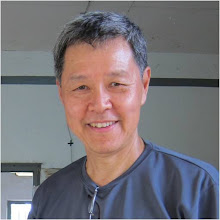
Frequency distribution of warfarin daily dose requirement
Pharmacogenomics. 2009, 10 (12) :1955-1965
Warfarin presents a very good case study with respect to drug response variability, and the management of the uncertainty that surrounds the therapeutic use of warfarin.
Warfarin inhibits the reductase that recycles warfarin epoxide (Vit K epoxide reductase C1) so that it can be used again in the production of the Vit K dependent clotting factors. Conceptually very simple, but a number of things complicate this schematic. Firstly warfarin is optically active, and the two isomers, R and S warfarin, have different potencies and PK characteristics. The S warfarin has 5 times the potency of R warfarin and so often has been taken to represent the active ingredient of racemic warfarin. This is a convenient over-simplification, and it is by no means true that all warfarin activity is accounted for by only the S isomer. This is further
complicated by the fact that the isomers are metabolized preferentially by different CYP450 enzymes and have different elimination halflives.

S warfarin has quite a long halflife - an average of 40 hours. In some individuals it may be up to or longer than 60 hours. This means that after initiation of dosing, S warfarin doesn't achieve steady-state concentrations until about a week of dosing. Using a loading dose will get you closer to the steady-state concentrations, but will still need 5 halflives to settle into 'steady-state'. To make it worse, this does not even mean that warfarin's anticoagulant effects stabilize after one week. In fact the anticoagulant effects are not just dependent on warfarin kinetics but also on the kinetics of the clotting factors, which have their own halflives of elimination. This means that after warfarin steady-state is reached, some more time is required for the clotting factors, and consequently the fully anticoagulant effect, to settle into 'steady-state'. Simulations suggest that the whole process of anticoagulation may take up to about 2 weeks to reach steady-state.

Practically this means that the sooner you can settle into the correct maintenance dose, the sooner the patient will be at a stable level of anticoagulation. Every time you tweak the dose, it will require another 2 weeks to settle down. This makes dosage optimization particularly problematic.
The main sources of variability for warfarin response may be anticipated to relate to the following:
a] body weight
b] diet (Vit K supply, inhibitors.inducers of CYP enzymes),
c] smoking
d] genetics of CYP enzymes
-particularly CYP2C9 for S-warfarin, but cannot ignore other CYP enzymes involved with R warfarin.
e] genetics of CYP4F2 involved in breakdown of Vit K
f] genetics of Vit epoxide reductase complex 1 (VKORC1)
g] drug interaction with CYP enzymes
What saves the situation for warfarin is that it has an excellent direct measurement of drug response, - the INR (International Normalized Ratio) which directly measures the state of anticoagulation produced by warfarin. The INR allows a very convenient way to adjust warfarin dosages according to a 'target' level of response. This is called a target response strategy. For warfarin, drug level monitoring is of little use because of i) the delay in response because of the clotting factors halflives, ii) the presence of 2 active warfarin isomers, and iii) because there are different sensitivities to warfarin effects because of genetic variants affecting VKORC1.
Though the INR is a useful 'direct' measure of warfarin response, it is in reality only a 'surrogate' measure of the true warfarin efficacy, which is the eventual effect warfarin has in reducing morbidity and mortality associated with thromboembolism, strokes etc. These can only be assessed through monitoring therapeutic outcomes. However, these outcome measures, do not help us in the day to day optimization of the patient's warfarin dose.








No comments:
Post a Comment